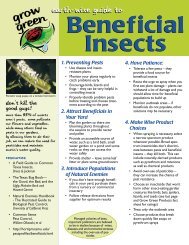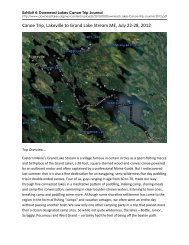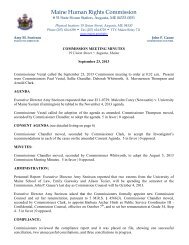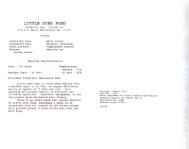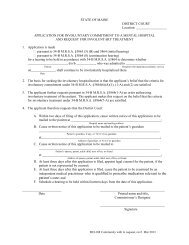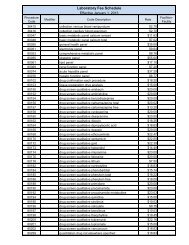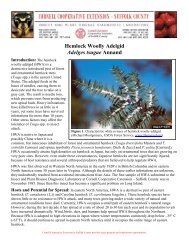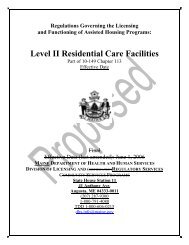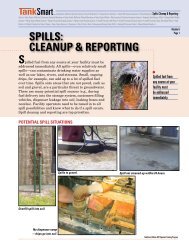PINWORM INFECTION (ENTEROBIASIS) Pinworm ... - Maine.gov
PINWORM INFECTION (ENTEROBIASIS) Pinworm ... - Maine.gov
PINWORM INFECTION (ENTEROBIASIS) Pinworm ... - Maine.gov
Create successful ePaper yourself
Turn your PDF publications into a flip-book with our unique Google optimized e-Paper software.
<strong>PINWORM</strong> <strong>INFECTION</strong> (<strong>ENTEROBIASIS</strong>)<br />
<strong>Pinworm</strong> (Enterobrosis) is a benign intestinal disease caused by a short spindle-shaped<br />
worm 1/4 -1/2 inches long and whitish color. It may occur in both children and adults and<br />
usually infects the whole family. The adult worms reside in the colon of the host and the<br />
females deposit hundreds of eggs in the folds of anus usually at night. Symptoms are<br />
itching of the perianal region, insomnia, restlessness, enuresis and irritability. In female<br />
patients the worms may migrate to the vagina causing itching and white or yellowish<br />
discharge. They may also irritate the urethra, giving pain on urination. Diagnosis is made<br />
by examining material microscopically for eggs. Diagnosis is made by applying<br />
transparent adhesive tape to the perianal region in the morning before bathing or<br />
defecating, and then examining it for eggs. Examination should be repeated three or more<br />
times before accepting a negative result. Female worms may be found in the feces, and in<br />
the perianal area.<br />
The mode of transmission is by direct transfer of the infective eggs by hand from anus to<br />
mouth of the same or new host or indirectly by clothing, bedding, food or other articles<br />
contaminated by eggs. The life cycle requires four to six weeks to be completed. Eggs<br />
become infective within a few hours after being deposited by females and survive less<br />
than two weeks outside the host.<br />
Methods of Control<br />
A. Preventive measures:<br />
1) Remove sources of infection by treatment of cases.<br />
2) Daily morning bathing, with showers (or stand up baths) preferred<br />
to tub baths.<br />
3) Frequent change to clean underclothing, night clothes, and bed<br />
sheets, preferably after bathing.<br />
4) Clean/vacuum house daily for several days after treatment of cases.<br />
5) Education in personal hygiene, particularly the need to wash hands before eating or<br />
preparing food, and to discourage scratching bare anal area and nail-biting. Keep nails<br />
short.<br />
6) Reduce overcrowding in living accommodations.<br />
7) Provide adequate toilets; maintain cleanliness in these facilities.<br />
B. Control of patient, contacts, and the immediate environment:<br />
1) Concurrent disinfection: change bed linen and underwear of infected person daily with<br />
care to avoid dispersing eggs into the air. Eggs on discarded linen are killed by exposure<br />
to temperatures of 55 C (131 F) for a few seconds; either boil or use a properly<br />
functioning household washing machine. Clean/vacuum sleeping and living areas daily<br />
for several days after treatment.<br />
2) Investigation of contacts: Examine all members of an affected family.
3) Specific treatment: pyrantel pamoate (Antiminth [R]), mebendazole (Vermox[R]),<br />
pyrvinium pamoate (Povan[R]), or piperazine citrate (Antepar[R]). In intensive<br />
infections, treatment should be repeated after two weeks; concurrent treatment of the<br />
whole family may be advisable if several are infected.<br />
Nancy Dube<br />
School Nurse Consultant<br />
Department of Education 624-<br />
6688/Nancy.Dube@maine.<strong>gov</strong>



